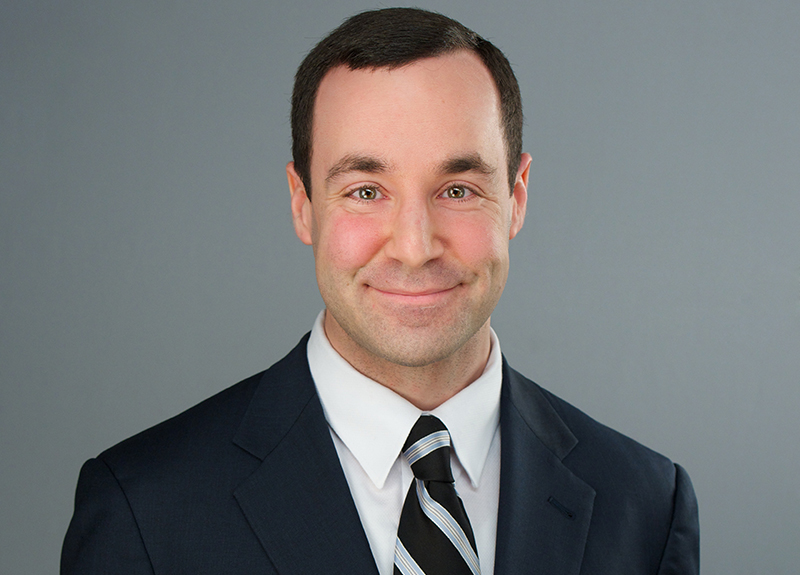A Guide to Loan Workouts: Déjà Vu Yet Different
Attorneys from Moses & Singer offer lenders a refresher on what to do when borrowers run into trouble.

Richard Strauss
During the 2007-2009 Great Recession, many commercial real estate lenders and borrowers engaged in loan workouts in order to provide borrowers necessary relief from the deterioration of market conditions while enabling lenders to attempt to revive once-profitable business endeavors. Similar arrangements will need to be made in the wake of the COVID-19 pandemic as, in most instances, it ultimately will be in both parties’ interests to attempt to restructure the loan through a workout instead of the borrower filing for bankruptcy or the lender commencing a foreclosure proceeding.
For lenders who may not have been around in 2007-2009, or for those who were around but may need a refresher, set forth below are important issues for a lender to consider while assessing a potential workout with a distressed borrower:
- At the outset, the lender should conduct an evaluation of the borrower and its business. An essential issue is whether the borrower will be able to continue as a viable business post-COVID-19. Naturally, an important part of that process is determining the governing market conditions. In addition, as to the borrower itself, this due diligence includes examining the profitability of the borrower’s business prior to the COVID-19 pandemic, the likelihood that the business will rebound after restrictions imposed as a result of the pandemic are lifted, and whether the borrower obtained a loan under the Paycheck Protection Program and its ability to pay back the non-forgivable portion of the loan. The lender’s evaluation should also include the value and marketability of collateral, business and leasing market trends, and the property’s sale or refinancing prospects in the marketplace.
- The lender should consider the benefits of restructuring rather than pursuing a foreclosure proceeding. Foreclosures can be expensive and protracted legal proceedings, with the attendant expense of attorneys’ fees. If the property is located in New York, significant transfer taxes are payable on a foreclosure. A lender that did foreclose is not in the business of owning and managing real estate and may be hesitant to subject itself to the liabilities associated with property ownership, such as tort claims and environmental issues. Moreover, there may be substantial time and carry cost factors in selling the property after the foreclosure that could unexpectedly lead to an unwanted period of transitional ownership and unanticipated material expenses.
- While considering its options, but before substantive workout discussions progress, the lender should first seek to enter into a pre-negotiation agreement, so that the borrower confirms the validity of the indebtedness; the existence of the applicable facts which constitute the defaults; that settlement discussions will not be admissible in evidence; that nothing said or written in the negotiations shall be binding until a formal written agreement is signed by both parties; that the lender or the borrower is permitted to terminate settlement discussions at any time for any reason; that the lender is not waiving any of its available rights or remedies for the applicable defaults; and, if the lender has enough leverage, an acknowledgment by the borrower that it has no defenses or an affirmative waiver of the borrower’s available defenses, if any. The lender should review the loan documents upon discovery of a problem loan in order to determine if there are any weaknesses in the loan documents. This “audit” will help to understand the lender’s rights and leverage with the borrower in negotiating the workout. In order to obtain an objective review of the documents, many lenders engage different counsel than the firm that papered the loan.
- The lender should conduct an analysis of the property. This would include confirming all requisite insurance is in place (e.g., casualty, liability, and title

Nahum Palefski
insurance), obtaining a current title and UCC search (to confirm no tax, judgment, or mechanics’ liens have been placed on the property), considering updating the original appraisal and conducting an on-site inspection for the project, and conducting an analysis of the status of the leases (e.g., rollovers, credit of tenants, length of the remaining terms, etc.).
- In negotiating the workout, the lender could consider a wide variety of solutions. These include modifying the loan’s terms by lowering the amount of periodic payments of interest or principal, which can either be forgiven or accrued to a later time. More aggressively, the lender may obtain a participating interest in the asset in which a portion of the net cash flow or the net sale proceeds would be paid to the lender.
- The lender could look to secure additional credit support for the loan by the borrower’s obtaining additional equity or financing. Among the potential sources (besides the lender itself) are partners of the borrower, guarantors, major tenants with their own investments in the project, subordinate lenders who may be wiped out by foreclosure, surety companies or new investors. Alternatively, the lender could seek to obtain additional collateral from borrower, guarantors and related parties (such as an equity pledge) or other lenders (including mezzanine lenders) or in some instances, the lender could obtain a form of “credit worthy” guarantee or letter of credit. The lender must scrutinize what security there will be for additional advances, to the extent that the lender chooses to make them.
- In addition to economic issues, there are legal concessions that the lender could consider seeking in the context of a workout, and which could be valuable in the event that the workout ultimately fails. For example, the loan documents could be revised to limit any money that the borrower might take out of the project until the loan is repaid, initiate a lockbox arrangement, place restrictions on leasing and other project operations, provide specific default triggers based on failure to meet specified benchmarks, revise existing “nonrecourse carve-outs” if less extensive than the current standard, obtain a waiver of all defenses or claims by the borrower existing at the time of the restructuring, obtain an acknowledgment that the lender has not waived any of its rights, and obtain the borrower’s consent to relief to the lender from the automatic stay that would result from the borrower’s subsequent bankruptcy filing.
- While contemplating a restructuring, the lender should consider that third parties may have rights and claims that must be addressed. Other creditors must be considered. Will they cooperate in a workout, or what financial concessions may be required? Guarantors’ liability should be maintained in a restructuring by obtaining a confirmation of their obligations.
- Subordinate liens must be considered, if applicable, because in many mortgages, the debt secured by the real estate is structured into separate prioritized secured interests held by different parties and there may be mezzanine debt secured by equity. Any intercreditor agreement should be reviewed.

Michael Samuels
- The lender should consider potential concerns with other participants in the loan, if applicable, such as loan syndications among lenders with separate notes but with the lead lender holding the collateral for all, or a loan with only one lender that sells undivided participation interests in the debt and security to other lenders.
- The lender may agree to a sale of a part of the asset in an ultimate restructuring agreement, or if no workout is feasible, may cooperate in a sale of the entire asset accompanied by a debt forgiveness.
- In connection with any of the above scenarios, the lender should determine if it must write down the loan, incurring accounting issues and having to charge a loss against the lender’s capital or thereby impairing its minimum capital requirement.
There are a myriad of other issues for lenders to navigate when contemplating a potential commercial real estate loan workout, and while this article illuminates some of the critical concerns to consider, each situation necessarily will present its own unique set of challenges.
Michael N. Samuels and Richard E. Strauss are chairs, and Nahum M. Palefski is a partner with law firm Moses & Singer’s real estate practice in New York.







You must be logged in to post a comment.